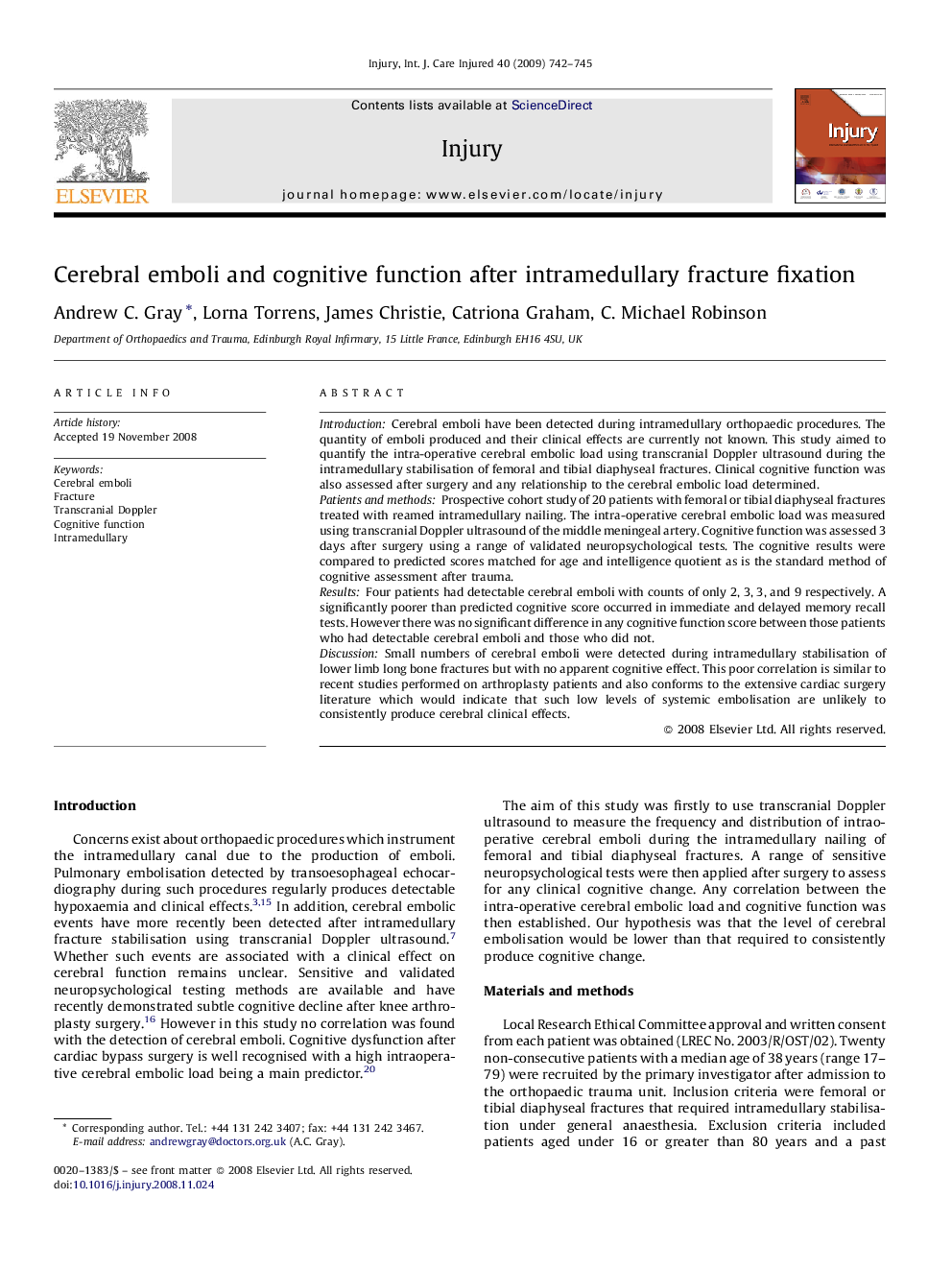| Article ID | Journal | Published Year | Pages | File Type |
|---|---|---|---|---|
| 3241585 | Injury | 2009 | 4 Pages |
IntroductionCerebral emboli have been detected during intramedullary orthopaedic procedures. The quantity of emboli produced and their clinical effects are currently not known. This study aimed to quantify the intra-operative cerebral embolic load using transcranial Doppler ultrasound during the intramedullary stabilisation of femoral and tibial diaphyseal fractures. Clinical cognitive function was also assessed after surgery and any relationship to the cerebral embolic load determined.Patients and methodsProspective cohort study of 20 patients with femoral or tibial diaphyseal fractures treated with reamed intramedullary nailing. The intra-operative cerebral embolic load was measured using transcranial Doppler ultrasound of the middle meningeal artery. Cognitive function was assessed 3 days after surgery using a range of validated neuropsychological tests. The cognitive results were compared to predicted scores matched for age and intelligence quotient as is the standard method of cognitive assessment after trauma.ResultsFour patients had detectable cerebral emboli with counts of only 2, 3, 3, and 9 respectively. A significantly poorer than predicted cognitive score occurred in immediate and delayed memory recall tests. However there was no significant difference in any cognitive function score between those patients who had detectable cerebral emboli and those who did not.DiscussionSmall numbers of cerebral emboli were detected during intramedullary stabilisation of lower limb long bone fractures but with no apparent cognitive effect. This poor correlation is similar to recent studies performed on arthroplasty patients and also conforms to the extensive cardiac surgery literature which would indicate that such low levels of systemic embolisation are unlikely to consistently produce cerebral clinical effects.
